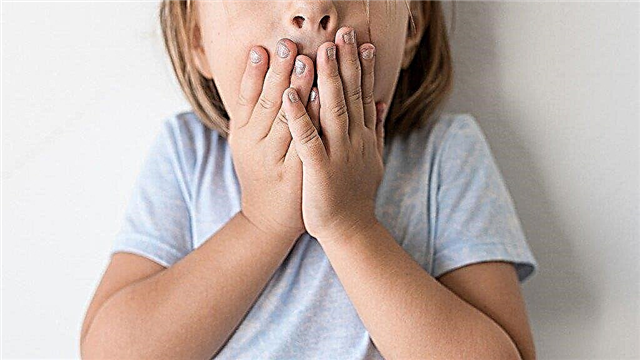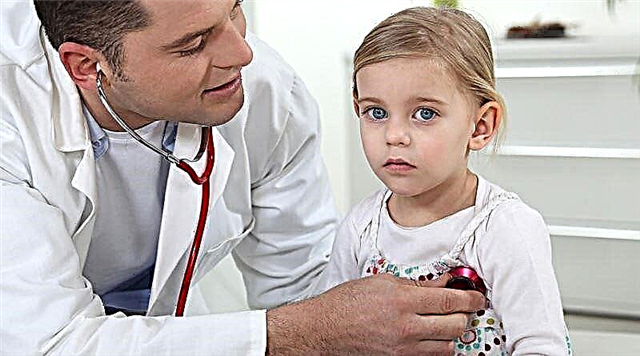
The term "blepharitis" in ophthalmology is usually used to denote inflammation of the eyelids. This disease can be caused by a number of reasons and have a different nature of the course. Often, blepharitis is diagnosed in children, including newborns and infants.

Classification
According to the characteristic clinical picture and conditions of the onset of blepharitis, ophthalmologists there are several of its varieties:
- scaly, or simple. It is manifested by hyperemia and an increase in edema along the edges of the eyelids. A distinctive feature of this form of blepharitis is the formation of peculiar scales, which are particles of exfoliated glandular epithelium;
- ulcerative. Here there is a purulent inflammatory process localized in the hair follicles of the eyelashes. Pathology is characterized by the formation of ulcers along the edge of the eyelid;

- meibomian. In this form of the disease, specific sebaceous glands of the eyelids (meibomian) produce an increased amount of fatty secretion, while its outflow slows down, which causes the gland to become blocked and, as a consequence, its pathological increase;
- rosacea. A form of blepharitis, which is characterized by the appearance on the eyelids of small grayish-red nodules, crowned with pustules. These symptoms can also be combined with rosacea;
- demodectic. Usually the causative agent of this form of blepharitis is a parasite - iron mite. Its habitat is the sebaceous and meibomian glands of the eyelids, as well as hair follicles. Most often, young children suffer from this disease due to non-compliance with the rules of personal hygiene.

Etiology of the disease
The most common cause of inflammation in the thickness of the eyelids in children is the excessive secretion of the sebaceous glands located in the thickness of the eyelids. Drops of the secreted substance accumulate at the edges of the eyelids, creating favorable conditions for the reproduction of pathogenic microflora.
Seborrheic dermatitis is often associated with blepharitis. This condition manifests itself a kind of stratification of dry skin areas on the face and scalp. There may also be a number of signs of an allergic reaction.

In addition, the causes of inflammation of the eyelids in children are often elementary non-observance of the rules of personal hygiene, chapped eyes, illiterate treatment of functional visual disorders, chronic anemia of various etiologies, lack of vitamins, inflammatory diseases of the oral cavity and nasopharynx, chronic inflammatory processes in one of the gastrointestinal path.
Also, blepharitis can be one of the signs of a focus of infection or helminthic invasion in the child's body.
Not only the symptomatology, but also the tactics of further therapy depends on the type of pathogen of the pathological process.


The clinical course of blepharitis in children
One of the main symptoms of blepharitis is severe itching in the eyelid area. Parents may notice that the child is constantly scratching his eyes, despite repeated requests from adults not to do so. Objectively, you can notice redness and swelling of the edges of the eyelids, as well as constant lacrimation. The child will constantly complain of severe itching or say that he has a speck in his eye.
With scaly blepharitis, small scales may appear in the eyelash growth area. The skin underneath will show signs of inflammation.


The ulcerative form of the disease is characterized by the formation of purulent crusts on the eyelids. If the child tries to comb them, then he will remove the scales along with the eyelashes, and a small ulcer will appear in the place where the crust was, which may bleed.
In addition to local symptoms, the child may show signs of general malaise. If he is not provided with qualified assistance in time, then in the future the disease can become chronic and have a negative impact on the baby's vision. Also, the inflammatory process can spread to neighboring organic structures and provoke the emergence of more serious ophthalmic pathologies.

Diagnostics
The diagnosis is made by an ophthalmologist on the basis of the child's subjective complaints, an objective examination of the eyelids, anamnesis and detection of concomitant diseases, as well as the results of laboratory tests. Parallel to eye visometry and biomicroscopy... In addition, the attending physician may prescribe a study of the refractive capabilities of the child's eye in order to identify a possible latent form of hyperopia (farsightedness), myopia (myopia) and astigmatism.
If a specialist suspects that the baby has demodectic blepharitis, then the child's cilia are subjected to detailed laboratory analysis.

To confirm blepharitis of an infectious nature, a bacteriological culture of a smear from the conjunctiva is performed. To refute or confirm helminthic invasion as a possible cause of the development of the disease, a sample of the child's feces is examined for helminth eggs.
Sometimes a child suffering from this disease needs a consultation from narrow specialists, for example, an immunologist, gastroenterologist, endocrinologist, otolaryngologist and others.

If there is a chronic course of blepharitis, which is accompanied by hypertrophy (abnormal growth of tissue) of the edges of the eyelids, then the specialist must admit the possible presence of a malignant neoplasm in the patient's body, for example, squamous and basal cell carcinomas, as well as cancer of the sebaceous glands of the eyelid. To confirm or deny this diagnosis, it is necessary to carry out biopsy followed by histological examination of the biopsy.

How is blepharitis treated in children?
For the treatment of the disease, modern methods are used that are most effective. Treatment tactics are always determined only by an ophthalmologist. To do this, it is necessary to accurately establish the causes and form of the disease.
It must be remembered that treatment of blepharitis should not be limited to the primary removal of symptoms. It is impossible to arbitrarily stop taking medications without first consulting an ophthalmologist, so as not to provoke the development of relapses and the transition of the disease into a chronic form.
During therapy, the doctor may raise the question of the advisability of using not only local antibacterial agents, but also general antibiotic therapy. This is usually associated with the appearance of abscesses (fibrous capsule with purulent exudate). In this case, the following drugs can be prescribed: oxacillin, ampicillin, sulbactam, amoxicillin and others. It may also be necessary to surgically open the abscess.

With a protracted course of the disease, tetracycline tablets are prescribed inside, the course of treatment for which is usually 1-1.5 months. In addition to the main therapeutic effect - the destruction of the infectious pathogen, one can also note its effect on the secretory activity of the meibomian glands. Any antibacterial agents are used strictly on the recommendation of a doctor after preliminary identification of the source of the pathogen, so self-medication with antibiotics "blindly" will most likely not bring the desired result.
Topical medications that contain corticosteroids are not used for long courses to avoid side effects.
Non-steroidal anti-inflammatory drugs are used if there are signs of chronic non-infectious blepharoconjunctivitis. Most often, drugs are prescribed in this situation. indocollir or diclofenac.


The well-known pediatrician Komarovsky in Russia dedicated one of his programs to this topic.
One way or another, the key to successful treatment of blepharitis is strict adherence to all medical recommendations. Remember, should not self-medicate or experiment with various questionable traditional medicine techniques.
As you know, the best remedy for a disease is its prevention. The main thing is to observe the rules of personal hygiene.

The children's ophthalmologist will tell you about the causes of eye inflammation in children under one year old in the next video.



